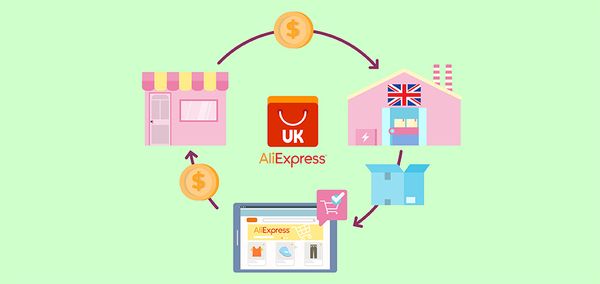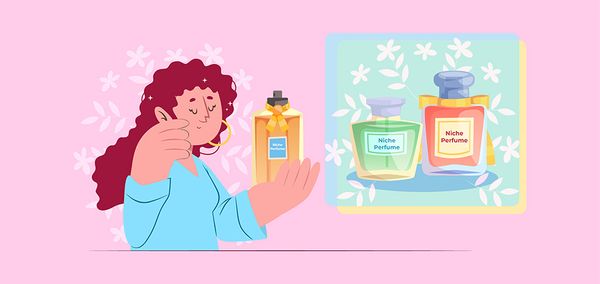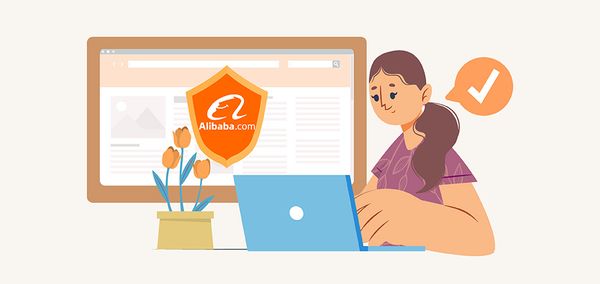What Is Unique Selling Proposition: Examples and Tips to Improve Your USP

Businesses all do something unique that makes them stand out from their competitors. Perhaps your product is of higher quality, your customer service is outstanding, or you fulfill orders faster than anyone else. If no one knows about it, it doesn't benefit you.
To help guide your branding and marketing decisions, every entrepreneur should know how to identify their unique selling proposition (USP).
What Is a Unique Selling Proposition
Unique selling propositions (USPs) are what makes your business stand out from the competition. It's a particular advantage that makes your business stand out from others in your industry.
By developing a USP, you can focus your marketing strategy and influence messaging, branding, copywriting, and other marketing decisions. Your USP should address your brand's most obvious question when you encounter a potential customer: What sets you apart from the competition?
USPs are based on what makes your brand or product unique to your customers and play to your strengths. Uniqueness alone does not constitute a strong USP. Your messaging will not be as effective if you don't differentiate around something your audience cares about.
Qualities of a Compelling USP
- Defensible and assertive: It is more memorable to take a specific stance, such as "we sell high-quality products," than a generic stance such as "we sell high-quality products."
- Put your customer's needs first: A product's uniqueness won't matter much if it doesn't resonate with your target customers.
- More than just a slogan: In addition to a slogan, your USP can be communicated in other areas of your business, such as return policies and supply chains. Ensure that your USP is reflected in all aspects of your business.
Why You Need a Unique Selling Proposition
You may find that many of your prospective customers struggle to decide which option in your industry is worth their time, money, and trust.
The selection process can be confusing for customers who don't have the experience to know what makes one competitor different from another.
Thus, your job is to make your unique selling proposition obvious, different, and memorable enough for them to see exactly what your business offers that the competition does not.
Examples of Unique Selling Proposition
1. Vistaprint
One of the items on the to-do list of small, growing businesses and solo entrepreneurs is having business cards printed. Also, you may need signage for your physical business or delivery vehicles, branded swag to raise brand awareness at conferences, labels and stickers, brochures, and so on.
2. Saddleback Leather
It would have taken me the rest of my life to discover Saddleback Leather if it weren't for the guys over at Fizzle. The USP (and website in general) of this company demonstrates how it addresses the needs of specific customers and highlights the truly unique quality of its products.
3. Robinhood
Investing platform Robinhood believes that the financial system should work for everyone, not just the wealthy. Anyone interested in investing in stocks can do so with as little as $1 from their smartphone and no prior knowledge of the markets.
4. Anchor
The USP of Anchor doesn't appear above the fold. It's hidden further down the page. A USP like this removes any barriers standing between a customer and starting a podcast. With this platform, you can do whatever you want, from wherever you want, without paying a dime.
5. Canva
Canva is an online platform for designing and sharing vector graphics that makes it easy for anyone to create and share. This is a nod to Canva's simplicity.
Although rival editing tools offer more advanced features, their learning curves are steeper. Complete novices can design professional images, flyers, and documents with Canva's drag-and-drop tools.
They have gained a competitive advantage by understanding their place in the market. The lesson is about turning a weakness into strength.
6. Death Wish Coffee
This product is a great example of developing a product based on a unique selling proposition that was largely overlooked in the crowded coffee market. The product doesn't appeal to every kind of coffee drinker, but it is hard to imitate and appeals to a certain segment.
7. Muse
Even when your products are truly unique, you need to have a USP. Muse is a notable example. Muse provides real-time feedback about your brain's activity as you meditate, and is the first consumer tool that does so.
Having no direct competitors does not mean they do not face any competition at all, but they are the first to offer what they do. Besides, people have survived without their products for centuries.
8. Tattly Tattoos
Many temporary tattoo products are intended for children and feature silly and simple designs. Tattly Tattoos offers gorgeous, intricate tattoos for people of all ages.
The temporary tattoos are meant to look like traditional tattoos and allow customers to express themselves without the commitment or high cost of a real tattoo.
Tattly's designs are bold, yet crafted from safe materials, so there are few direct competitors. They can, in theory, develop their USP more easily, but they still have to differentiate themselves from their more familiar competitors.
9. Third Love
Lingerie for women is a billion-dollar industry, which is why Third Love had to find a way to compete with legacy brands.
The Third Love brand is built around the USP "we have the right fit". There is even a Fit Finder quiz on their website that allows first-time customers to find the right fit for them.
The USP of Third Love is its promise. The brand prioritizes finding the perfect fit for each consumer based on their individual needs, rather than providing a sizing chart.
10. Twelve Saturdays
Almost anywhere sells school spirit apparel for college students. Local options are available right on campus, and most big-box stores sell college gear. How do Twelve Saturdays compare?
Rather than just highlighting that they have college apparel, they remind students that there are twelve Saturdays in a football season, and their products will help you look great for all of them.
For college students, football games are big social events, and they want to show up each week looking fresh. The wearer doesn't want to wear the same outfit more than once or arrive in the same clothes as someone else.
Useful Tips to Develop a USP
It's better to understand who your customers are and what you offer them before building your USP. You'll gain a clear understanding of why you are selling.
The development of different Unique Selling Propositions for different customer segments is also efficient. Below are a few tips for developing an effective USP:
1. Identify your unique qualities
A USP is not just for your company; it is the reason you created the product. In the event, your competitor can copy your USP easily, take a step back and ask yourself why you built this product in the first place.
According to Reid Hoffman, products have to be disruptive. "Is this massive and different?" he once asked. There's no way it can be anything like it. It must transform an industry."
| Get Started Now to Grow Your Online Business with the Best AliExpress Dropshipping Tool - DSers! |
Your USP is unique to you, your business, as well as the products and services you provide. It should focus on the strengths and benefits that differentiate you from your competitors.
2. Be confident and clear
Be authentic in your communication once you have figured out what makes you a spade in a deck of diamonds. You can reflect your vision through your USP if you have one. Customers will not trust your USP if you can't confidently explain it.
Additionally, when sales representatives face objections, it would be difficult for them to fulfill their promise. Build a USP that explains the value clearly and stands firm against skepticism.
3. Show rather than tell
The number of companies claiming to help customers is already thousands. Unfortunately, many buyers fall victim to their false promises. Instead of just making tall, generic claims, your unique selling point should provide real benefits.
Don't say, "We're here to help sales reps." Instead, say, "We have helped our customers increase conversion rates with our AI-driven note-taking."
It's essential to demonstrate that you follow your advice. The truth is, many customers have already bought products based on false promises and regretted their purchases. It is in your best interest to demonstrate that you can meet your marketing promises.
4. Take a benefit-first approach
There is still a chance that you will fail to capture a market even when you have a breakthrough product. Perhaps your USP revolves around how great your product is or how advanced it is. Customers aren't motivated by this approach.
If your sales team frequently encounters this objection, it's either a mistake in the sales process, or it's time to update your USP.
The post-sales experience is more important to customers than the product itself. They want to enjoy the world after buying. When you buy a new motorcycle, for instance, it's a tedious process but you enjoy the feeling of driving a brand-new motorcycle.
5. Consider the perspective of the customer
Entrepreneurs who are new to the business often lose sight of the fact that their product exists to serve customers. Identify the problems to satisfy the customer's needs. You own a burger shop, and you have many food lovers coming to your place.
- What makes them choose you?
- How do you demonstrate your trustworthiness?
Customers do not only choose you because of the price. Customer service, quality, convenience, reliability, friendliness, cleanliness, or location can be your USPs.
If your competitor beats you on price, you need to build a USP around an additional important feature (which also relates to economies of scale).
6. Analyze consumer behavior
Understanding consumer behavior has become easier thanks to sales analytics. You can deduce buying patterns with the data. Understanding the reasons for buying also requires psychology. Instead of focusing only on demographics, find out what feelings go along with buying.
You might find, as in our previous example, that 65% of your customers are teenagers. Instead of stopping here, find out what motivates them to choose you, such as taste, location, and service.
Luxury brands are another great example. A successful luxury brand understands that its customers buy more than just the product.
7. Find out why existing customers choose your product
Receive feedback directly from your customers if you have an existing customer base. It is their untapped knowledge that makes a difference in your business.
As an example, if you have an online shoe store, ask your customers:
- What is their favorite pair of shoes?
- Why do they prefer them to other brands?
- Are they more concerned with quality, design, product life, or after-sales service?
It's amazing how honest customers are with their feedback. Providing these is the most valuable value you can offer. When you receive feedback, remember to remain humble. They may challenge your old ideas. Yet, the product is not meant for you.
8. Find out what motivates your customers to buy
Understand what motivates and drives your customers. Knowing your target market's demographics is essential, but even more important is understanding how they derive gratification in life and what their purchasing preferences are.
Products and services are primarily purchased based on desires rather than needs. By understanding these desires and motivations, you can determine your true unique selling proposition.
Bottom Line
Each of these unique selling proposition examples is based on research and testing, no matter if they're based on a product, service, prospect, or purpose.
To discover your unique angle, ask your audience questions and drill down into your niche to uncover market gaps. Research your copy, then write and rewrite until you are sure you can state your USP clearly in a few sentences.
You can then test your USP with your audience. See if it resonates with your audience and, more importantly, if it contributes to your bottom line.













 Company
Company
 Why Choose DSers
Why Choose DSers
 Blog
Blog
 Help Center
Help Center




 Live Chat
Live Chat